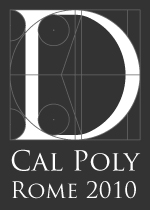This map is a fictional translation of the Jewish Ghetto. The narrative to this translation is as follows:
In an area that was once used to contain the unwanted Jewish community, a new city has immerged. The ghetto which was once a place of segregation and containment, has now taking on a new identity. Stemming from its historical ideals, the new concept of the Jewish ghetto has been translated into a Roman retreat.
This translation has emerged from the current state of Rome, and its identity as the world’s most popular tourist destination. In this fiction, the present Roman community is tired of the tourist. In a desperate attempt to reclaim and escape the chaos of what Rome has become, the “true Roman” has moved to the old ghetto, and by choice, has segregated themselves. The tourist is not allowed inside the heavily guarded city walls. This map shows the rebuilding of the old walls which once surrounded the perimeter of the ghetto. In some areas it has been modified. For example, in the area of Teatro Marcello, the wall has been expanded to include the complex- an important Roman structure from antiquity.
The fabric of the community inside has taken on the role of a small city- not much different from what is was once used as before. Much of the essential fabric already exists, however a few changes have occurred. The Teatro di Marcello is now a library for the community. It also holds important achieves of Rome’s history that the “true Romans” struggled to save. The synagogue has been converted into a Catholic church. Its central location and elaborate details give it importance to the community. In front of the new Catholic church the large palazzo that once existed has been torn down to create a large piazza. Though via Roma currently performs as a piazza, with its busy cafes and restaurants, the “true Rome” was lacking a large open communal space. The location of the old Palazzo was a suitable location for such a place due to the axis of via Roma and its adjacency to Teatro di Marcello as well as the church. Most of the new development has occurred in this area. There is an interesting change in elevation between the piazza and the Teart di Marcello. A grand stair case has been added to open up the space. On axis with the ancient Portico d’Ottavia the stairs enhance its significance to the community.
The island which was once a hospital has been translated into the new government center. The isolation from the communities around it give it protection and secrecy. It acts as a barrier between Rome and the “true Rome” on the south west side.
Vehicular traffic has been limited inside the walls. Its condense area does not call for a need, however there is the occasion. Two main roads have been implemented; via Roma, and Longtevere. Both roads meet in front of Ponte Fabricio establishing that intersection as important location connecting the government to the town piazza.

